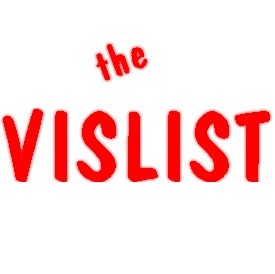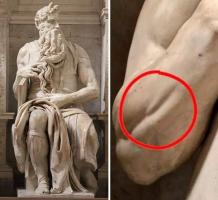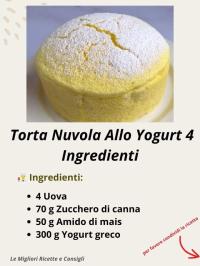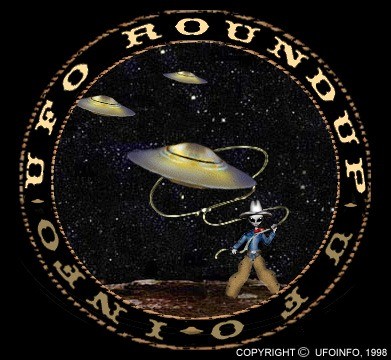Copy Link
Add to Bookmark
Report
VISION-LIST Digest 1988 06 11

Vision-List Digest Sat Jun 11 09:41:58 PDT 1988
- Send submissions to Vision-List@ADS.COM
- Send requests for list membership to Vision-List-Request@ADS.COM
Today's Topics:
-- Vision Guided Robotics
-- ICIP'89 : 1989 IEEE International Conference on Image Processing
-- Reply to request on DataCube
-- Quota Studentships in Computer Science
-- Detection of pipe deterioration
-- AI conference
-- Source code for STEREOPSIS algorithms
-- Multiple copies of Vision List Digest
----------------------------------------------------------------------
Date: Wed, 25 May 88 18:21:00 PDT
From: pkahn@meridian.ads.com (Phil Kahn)
Subject: vision guided robotics
[This was posted on comp.ai,sci.electronics,rec.ham-radio,rec.video,
but I thought it might be of general interest.
- pk ]
Date: 12 May 88 04:04:02 GMT
From: jbn@glacier.STANFORD.EDU (John B. Nagle)
Subject: TV systems for mobile robots
Keywords: TV vision robot RF transmitter
Organization: Stanford University
I'd like to hear about experience with various cameras
and radio links used with mobile robots. I'm interested in
units suitable for a small, high-speed vehicle in which the
vision processing is offboard.
The ideal device, as pointed out by Russell Anderson in "A Robot
Ping-Pong Player", is a CCD frame-transfer image sensor, since
with such devices the entire frame is acquired as a unit and
no artifacts of the scanning process appear in the image. Examples of
such parts are the Sanyo LC99xx series. (The Fisher-Price Toy
Camcorder and Lionel Loco-Vision use the LC9943, a low-resolution
part from this line. There are higher resolution parts in the same
family.) Is a minature TV camera using such a sensor with at least
250x250 resolution available yet?
Next best is a CCD line-transfer image sensor. The
better Pulnix units have these, and many robotic groups use them.
What is the experience with these?
The Sony Watchcam is a low-cost alternative. Any
experience here?
What about TV transmitters and receivers? I've seen a
few TV Genie units around, but not only are they weak, they're
illegal. But they do show that such a transmitter need not be large,
and there are bands in which one can obtain appropriate licences. I
do need something about that size, though, say 4x2x2 or smaller. Is
there such a thing as FM TV gear, to improve the noise immunity?
Has anyone dealt with the problem of camera
stabilization and vibration isolation in a moving vehicle? The
Steadicam gyro approach seems overkill. Sorbothane shock mounting is
easy enough to do, but is it enough to get clear single frames? Has
anyone tried using data from accelerometers and rate gyros to
stabilize an image electronically?
Has anyone tried sending data back from a robot in the
audio carrier of a TV signal or in the vertical retrace interval? If
so, with what hardware?
Yes, I know it's a hard, ugly problem.
John Nagle
------------------------------
Date: Fri, 27 May 88 10:00 H
From: <CHTEH%NUSEEV.BITNET@CORNELLC.CCS.CORNELL.EDU>
Subject: ICIP'89 : 1989 IEEE International Conference on Image Processing
1989 IEEE INTERNATIONAL CONFERENCE ON IMAGE PROCESSING
(ICIP'89)
PRELIMINARY ANNOUNCEMENT
and
FIRST CALL FOR PAPERS
The 1989 IEEE International Conference on Image
Processing (ICIP'89) will be held in Singapore on 5-8
September, 1989. The conference is jointly organised by the
Computer Chapter, IEEE Singapore Section and the National
University of Singapore. This will be the first international
conference solely devoted to image processing to be organised
in this region. The conference will include regular sessions
on all aspects of the theory and applications of image
processing. In addition, tutorials by eminent speakers
presenting the state-of-the-art in selected areas of image
processing will be offered.
Papers describing original work in all aspects of image
processing are invited. Topics for regular sessions include,
but are not limited to, the following :
Image restoration/enhancement Machine vision
Video communications Office image processing
Image pattern recognition Biomedical imaging
AI vision techniques VLSI implementation
Remote sensing System architecture
Authors are invited to submit four copies of an extended
summary of at least 1000 words of each of their papers to :
Technical Program Chairman, ICIP'89
c/o Meeting Planners
100 Beach Road, #33-01
Shaw Towers
Singapore 0718
Republic of Singapore
The summary should contain sufficient detail, including a
clear description of the salient concepts and novel features
of the work. The summary should include authors' names,
addresses, affiliations, and telephone, telex and fax numbers.
The authors should also indicate one or more of the above
topics that best describe the content of the paper.
Proposals for special sessions are also welcome and
should be addressed to the Technical Program Chairman.
AUTHORS' SCHEDULE
Submission of summary 9 January 1989
Notification of acceptance 6 March 989
Submission of final manuscripts 8 May 1989
For further information and questions, please either write to the Technical
Program Chairman at the above address OR E-mail to me at the following
E-mail addresses :
eletehch@nusvm.bitnet
chteh@nuseev.bitnet
For the period 28 May-18 June, 1988, please E-mail to me at the following
E-mail address :
teh@ai.cs.wisc.edu (ARPAnet at University of Wisconsin-Madison)
Dr. Cho-Huak TEH
Electrical Engineering Department
National University of Singapore
10, Kent Ridge Crescent
Singapore 0511
Republic of Singapore
------------------------------
Date: Fri, 27 May 88 10:32 EDT
From: "Jacob N. George -- (313)947-1220" <"AESV01::GEORGE"@gmr.com>
Subject: reply to request on DataCube
Subj: reply to marc@acf8.nyu.edu
Your note hit on the major problems with Datacube:
1. Relatively difficult to program.
2. Very expensive - it usually requires many boards to perform any given
algorithm (avg oost is $3000 to $4000 per board).
3. Limited precision.
Of the three problems, #3 is the most serious. Convolutions are limited to
8 bit kernels. In addition, the VFIR boards have only 8 bit inputs so it is
not possible to concatenate boards and retain 16 bit output precision.
Only the MAX-SP and MAX-MUX boards are 16 bit input and output. In addition,
none of the boards has a multiplier with greater than 8 bits.
Another difficulty I have encountered is limited memory. To hold a 16 bit,
512 x 480 image requires 2/3 of a FRAMESTORE board. This means that a
separate FRAMESTORE board is needed for each working ram that you use.
The vicom command set and fractional 16 bit data representation seem to be
better suited to general image processing. I would guess that a vicom
system which resides on a SUN workstation is very price competetive with
what would be required in a "comparable" datacube system.
------------------------------
Date: 3 Jun 88 08:35:55 GMT
From: andy@cs.hw.ac.uk (Andrew Wallace)
Subject: Quota Studentships in Computer Science
Organization: Computer Science, Heriot-Watt U., Scotland
Heriot Watt University
Department of Computer Science
Applications are invited for 3 year research studentships leading
to the degree of Ph.D., commencing in October 1988. The
department has a wide range of research interests concentrated in
the areas of
Logic Programming and Databases
Expert Systems
Human-Computer Interaction
Computer Vision and Graphics
Candidates must be British residents, and have or expect to obtain
at least an upper second class honours degree in Computer Science
or a related subject, or an equivalent qualificaqtion. They must
also display a strong motivation for research. Enquires should be
made in the first instance to Dr. Andrew Wallace, Dept. of
Computer Science, Heriot-Watt University, 79 Grassmarket,
Edinburgh EH1 2HJ.
-Andrew Wallace JANET : andy@cs.hw.ac.uk
ARPA : andy@uk.ac.hw.cs
UUCP : ..ukc!cs.hw.ac.uk!andy
------------------------------
Date: 8 Jun 88 23:54:54 GMT
From: munnari!dbrmelb.oz.au!ron%dbrmelb.dbrhi.OZ@uunet.UU.NET (Ron Sharpe)
Subject: Detection of pipe deterioration
Keywords: Image analysis, pipe probes & robots
Organization: CSIRO, Div. Construction and Engineering, Melb., Australia
This is a request for any research leads for a project to detect & analyse
defects inside buried pipes (non-metal) using visual and other sensors.
The object is to detect pipe cracking, water infiltration, corrosion,
roots, misalignment, wall strength and thickness and fat deposits.
We already have access to video images taken inside pipes down to
150mm (6") diameter.
Any references dealing with image enhancement and AI analysis, use of sonics
and other detectors, probes that can operate inside pipes under
remote or self control would be greatly appreciated.
Dr Ron Sharpe, CSIRO Div of Building, Construction & Engineering,
PO Box 56, Highett, Vic 3190, Australia.
Ph (+613) 556 2211, Fax (+613) 553 2819, Tlx AA 33766
e-mail: ron@dbrmelb.dbrhi.oz
------------------------------
Date: 10 Jun 88 08:05:07 GMT
From: munnari!cs.flinders.oz.au!mjb@uunet.UU.NET (Mike Brooks)
Subject: AI conference
Keywords: AI, conference, meeting, gurus
Organization: Flinders University of South Australia
AUSTRALIAN JOINT ARTIFICIAL INTELLIGENCE CONFERENCE
AI'88 Secretariat, Department of Computer Science, The University of Adelaide,
GPO Box 498, Adelaide, South Australia 5001, Australia.
15 - 18 NOVEMBER, 1988
ADELAIDE, AUSTRALIA
The conference will be held from 15-18 November, 1988. The three day period
from 16-18 November will be given over to the main conference programme and
Tuesday 15 November will be dedicated to a number of tutorial presentations
by various speakers to fee paying groups by arrangement.
Keynote speakers for the conference will include Dr. William J. Clancey, Dr.
Scott Fahlman, and Dr M.P Georgeff.
Dr. Clancey received his Ph.D. degree from Stanford University in 1979. His
doctoral dissertation described the acquisition of rule-based expertise
through dialogue. He has been active in expert systems research since he
joined the MYCIN project in 1975. His interests lie in computational
modeling of problem solving and the design of architectures for expert systems.
To investigate these issues, he has developed NEOMYCIN and instructional
programs based upon it. He is presently Senior Scientist at the Institute
for Research on Learning at Palo Alto, California.
Dr. Fahlman received his Ph.D. degree from M.I.T. in 1977. His doctoral
dissertation described the NETL architecture for representing large amounts
of real-world knowledge. He is presently a Senior Research Computer Scientist
in the Computer Science Department of Carnegie-Mellon University. His primary
research interest is in the area of massively parallel computing architectures
for A.I. problems. Dr. Fahlman has also been very active in the development of
software tools for A.I. research. He has also been a major participant in the
definition and standardization of the Common Lisp language.
Dr Georgeff is head of the new Institute for Artificial Intelligence in
Melbourne. He has spent many years researching at SRI in California and
will speak on real-time embedded systems.
Papers
Previously unpublished papers addressing any of the objectives of the
conference should be sent to the AI'88 Secretariat. Persons in
industry are particularly encouraged to submit papers on their work.
Papers will be reviewed by a refereeing pannel and are due on 1st July
1988. Authors will be given an opportunity to modify their papers.
Notification of acceptance will be on 31st August and final copy is
due on 30th September.
Registration Forms
Registration forms will be available from the AI'88 Secretariat at the above
address in early June 1988.
------------------------------
Date: Fri, 10 Jun 88 13:45:19 EDT
From: Venugopal Govindaraju <boulder!sunybcs!govind@HANDIES.UCAR.EDU>
Subject: source code for STEREOPSIS algorithms
Organization: SUNY/Buffalo Computer Science
I was wondering if I can borrow the source code for STEREOPSIS algorithms
which I could use to solve problems like finding correlation between
points in two different accumulator arrays.
I would really appreciate it if someone can e-mail it to me.
Thanks in advance
Venu
(govind@sunybcs.UUCP or govind@ellie.cs.buffalo.edu)
------------------------------
Date: Sat, 11 Jun 88 09:38:53 PDT
From: Vision-List-Request <vision@deimos.ads.com>
Subject: Multiple copies of Vision List Digest
Several subscribers have reported that they have received multiple copies of
the list. If this is happening to you or your site, please mail me the
headers of all copies. Some strange net bouncing is occuring.
Thanks,
Phil Kahn
Moderator Vision List Digest
------------------------------
End of VISION-LIST
********************

















